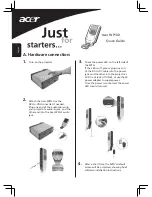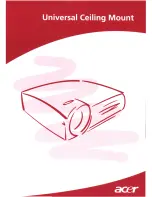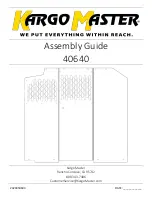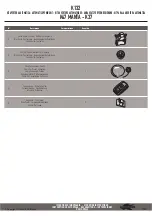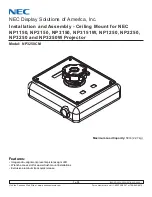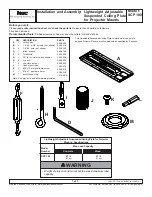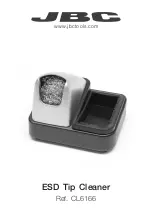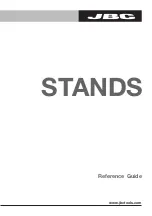
Niles Audio Corporation
12331 S.W. 130 Street Miami, Florida 33186 Tel: (305) 238-4373 Fax: (305) 238-0185
www.nilesaudio.com
Printed in Taiwan
© 1999 Niles Audio Corporation DS00131A
a hole about an inch above the center of your
proposed speaker location
(See Figure 3)
.
If the wires movement is obstructed by a pipe or
cable, fill the hole(s) with spackle or other patch-
ing compound and try another location.
2. When determining the final location of the
cutout keep in mind that the frame and bracket
will extend beyond the cutout. Make sure that
you do not place the edge of the cutout directly
next to a stud. Locate the studs using a stud sen-
sor or hand-knocking. Once you have deter-
mined the correct position for the cutout, hold
the supplied template up to the wall surface.
Level the template in either the horizontal or the
vertical position and mark the wall with a pencil.
Drill the four corners with a 1/4” drill bit.
3. If you are cutting a painted or wall papered
wall use a sheetrock or keyhole saw. Cut the
hole with the saw at a 45 degree angle. That
way, the drywall section can be replaced cleanly
if there is an unseen obstruction behind the wall.
BE VERY CAREFUL NOT TO SAW THROUGH
EXISTING WIRES, PIPES, OR STRUCTURE. IF
YOU FEEL ANY EXTRA RESISTANCE AS YOU
ARE CUTTING, STOP.
4. If you are cutting into lath and plaster walls,
use masking tape to outline your penciled
marks, drill the four corners with a 1/4” bit and
use a razor to score the plaster down to the lath
beneath. Then use a chisel to remove all of the
plaster within the taped outline. Finally, insert a
metal cutting blade into a sabre saw and very
slowly and carefully saw the lath. Sawing the
lath can easily vibrate plaster off the wall. If you
have the patience, use a pair of tin snips to slow-
ly nip away at the lath instead. There is no risk
with this method, it is just time consuming.
5. Fill the wall cavity with insulation at this
point. Remember to use equal amounts of insu-
lation for each speaker.
6. Slip the mounting bracket through the hole
and pull it toward you so that its front edge slides
into the hole and stops in place.
7. Attach the frame to the bracket by screwing
the frame to the bracket using the supplied
screws. Do not overtighten the screws, this will
distort the frame and the grilles will not fit (this is
not permanent, just loosen the screws and the
grille will pop in). The screws should pull the
frame and bracket together (sandwiching
the drywall) so that the frame is absolute-
ly flush with the wall surface. There
should be no gaps between the wall
and the frame
(See Figure 4)
.
Hole Cutout
Dimensions
525
6 1/4”
x 9”
650
7 5/8” x
10 5/8”
800
9 1/8” x
13 1/8”
Figure 4
Figure four illustrates
the installation of an
800 bracket, frame,
and grille in existing
construction
Frame
Bracket
Grille
®





